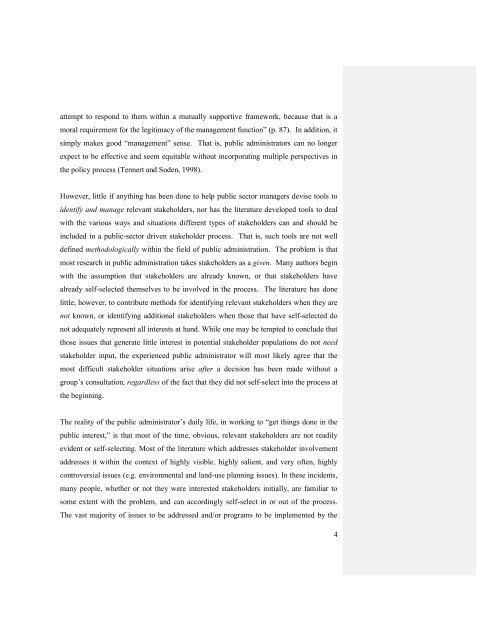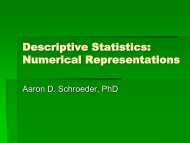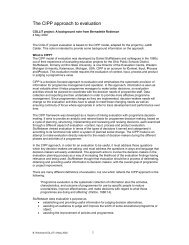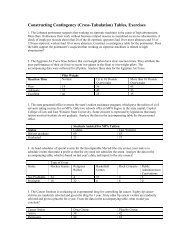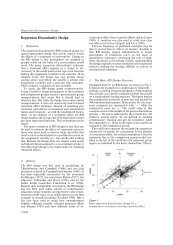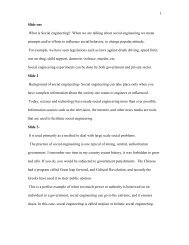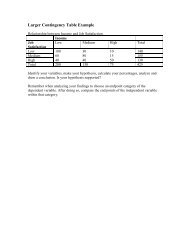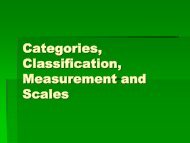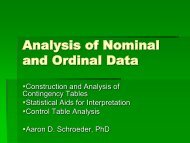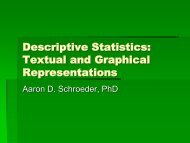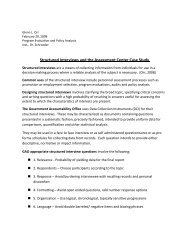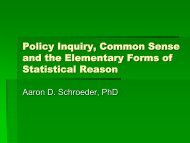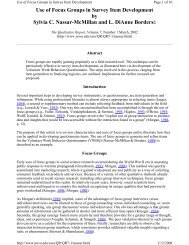The Problem
The Problem
The Problem
You also want an ePaper? Increase the reach of your titles
YUMPU automatically turns print PDFs into web optimized ePapers that Google loves.
attempt to respond to them within a mutually supportive framework, because that is a<br />
moral requirement for the legitimacy of the management function” (p. 87). In addition, it<br />
simply makes good “management” sense. That is, public administrators can no longer<br />
expect to be effective and seem equitable without incorporating multiple perspectives in<br />
the policy process (Tennert and Soden, 1998).<br />
However, little if anything has been done to help public sector managers devise tools to<br />
identify and manage relevant stakeholders, nor has the literature developed tools to deal<br />
with the various ways and situations different types of stakeholders can and should be<br />
included in a public-sector driven stakeholder process. That is, such tools are not well<br />
defined methodologically within the field of public administration. <strong>The</strong> problem is that<br />
most research in public administration takes stakeholders as a given. Many authors begin<br />
with the assumption that stakeholders are already known, or that stakeholders have<br />
already self-selected themselves to be involved in the process. <strong>The</strong> literature has done<br />
little, however, to contribute methods for identifying relevant stakeholders when they are<br />
not known, or identifying additional stakeholders when those that have self-selected do<br />
not adequately represent all interests at hand. While one may be tempted to conclude that<br />
those issues that generate little interest in potential stakeholder populations do not need<br />
stakeholder input, the experienced public administrator will most likely agree that the<br />
most difficult stakeholder situations arise after a decision has been made without a<br />
group’s consultation, regardless of the fact that they did not self-select into the process at<br />
the beginning.<br />
<strong>The</strong> reality of the public administrator’s daily life, in working to “get things done in the<br />
public interest,” is that most of the time, obvious, relevant stakeholders are not readily<br />
evident or self-selecting. Most of the literature which addresses stakeholder involvement<br />
addresses it within the context of highly visible, highly salient, and very often, highly<br />
controversial issues (e.g. environmental and land-use planning issues). In these incidents,<br />
many people, whether or not they were interested stakeholders initially, are familiar to<br />
some extent with the problem, and can accordingly self-select in or out of the process.<br />
<strong>The</strong> vast majority of issues to be addressed and/or programs to be implemented by the<br />
4


